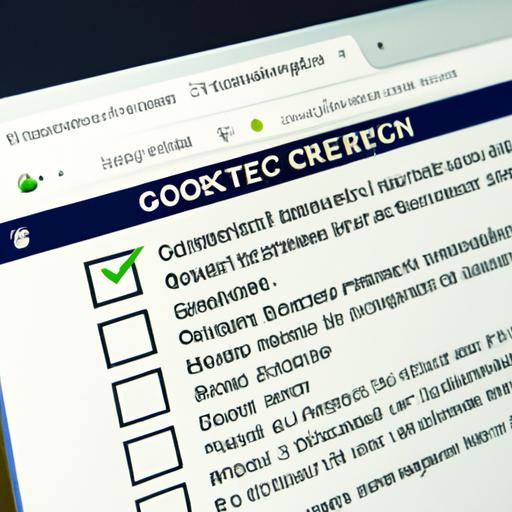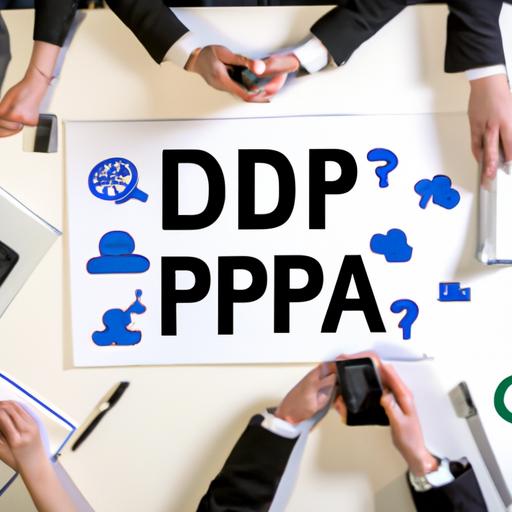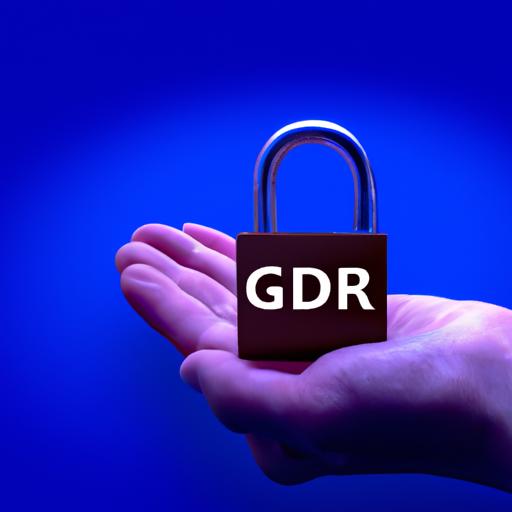Introduction to the EU General Data Protection Regulation (GDPR)

Welcome to the world of data protection, where your privacy matters. In this digital age, our personal information is constantly being collected, stored, and processed by various entities. To ensure the safety and security of our data, the European Union (EU) introduced the General Data Protection Regulation (GDPR). Let’s delve into what the GDPR entails and why it holds immense significance in today’s interconnected world.
A. What is the EU GDPR?
The EU GDPR is a comprehensive regulation that governs the processing and protection of personal data within the EU and European Economic Area (EEA). It aims to harmonize data protection laws across EU member states, providing individuals with greater control over their personal information. Regardless of where the data is processed, whether within the EU or by organizations outside its borders, the GDPR’s reach extends to safeguard the privacy rights of EU citizens.
B. Purpose and Significance of the GDPR
The GDPR was established with a primary purpose in mind – to empower individuals with more control over their personal data. It grants individuals the right to know how their data is being used, the ability to access and rectify it, and the power to decide whether or not their data should be processed. Moreover, the GDPR imposes obligations on organizations to handle personal data responsibly and securely.
This regulation signifies a monumental shift in the way organizations collect, process, and protect personal data. It compels businesses to adopt transparent practices, ensuring that individuals are informed and can make informed decisions about their personal information. By strengthening data protection, the GDPR enhances trust between individuals and organizations, fostering a more secure digital environment.
C. Key Principles of the GDPR
The GDPR is built upon a set of fundamental principles that guide its implementation. These principles serve as the foundation for ensuring data protection and include:
- Lawfulness, fairness, and transparency: Personal data must be processed lawfully, with transparency and fairness towards individuals.
- Purpose limitation: Data should be collected for specified, explicit, and legitimate purposes, and not further processed in a manner incompatible with those purposes.
- Data minimization: Organizations should only collect and retain the necessary personal data for the intended purpose.
- Accuracy: Personal data must be accurate and kept up to date.
- Storage limitation: Data should be stored for no longer than necessary.
- Integrity and confidentiality: Organizations must implement appropriate security measures to protect personal data from unauthorized access, alteration, or disclosure.
- Accountability: Organizations are accountable for demonstrating compliance with the GDPR and should be able to provide evidence of their adherence to data protection principles.
Now that we have a solid understanding of the EU GDPR’s introduction, purpose, and key principles, let’s proceed to explore the scope of this regulation and its implications for various entities.
Understanding the Scope of the EU General Data Protection Regulation (GDPR)

A. Who does the GDPR apply to?
The GDPR has a broad scope and applies to a wide range of entities involved in processing personal data. It applies to both data controllers, who determine the purposes and means of processing, and data processors, who process data on behalf of the controller. The GDPR applies to organizations operating within the EU/EEA, regardless of their size or sector. Additionally, it also applies to organizations outside the EU/EEA that offer goods or services to individuals within the EU or monitor their behavior.
B. Types of personal data covered under the GDPR
The GDPR defines personal data as any information relating to an identified or identifiable natural person. This includes not only obvious data such as names, addresses, and social security numbers but also extends to online identifiers like IP addresses, device information, and even cookie data. The regulation recognizes the importance of protecting all forms of personal data, ensuring individuals’ privacy rights are upheld.
C. Extraterritorial reach of the GDPR
One of the notable aspects of the GDPR is its extraterritorial reach. It applies to organizations outside the EU/EEA if they process the personal data of individuals located within the EU in connection with offering goods or services or monitoring their behavior. This means that businesses worldwide must comply with the GDPR if they handle EU citizens’ data, regardless of their physical location. The extraterritorial reach of the GDPR ensures that the privacy rights of EU citizens are protected, regardless of where their data is processed.
Understanding the scope of the GDPR is crucial for organizations to determine their obligations and responsibilities under the regulation. In the following section, we will explore the key rights and responsibilities that individuals and organizations must adhere to under the EU GDPR.
Key Rights and Responsibilities under the EU GDPR

The EU GDPR not only grants individuals certain rights over their personal data but also places responsibilities on organizations that process this data. Let’s explore the key rights individuals possess under the GDPR and the corresponding responsibilities that data controllers and processors must uphold.
A. Individual Rights under the GDPR
1. Right to be informed
Individuals have the right to be informed about the collection and use of their personal data. Organizations should provide transparent and concise privacy notices, informing individuals about the purpose, legal basis, retention period, and any recipients of their data.
2. Right to access
Individuals can request access to their personal data held by an organization. This right enables individuals to verify the lawfulness of processing and understand how their data is being used.
3. Right to rectification
If personal data is inaccurate or incomplete, individuals have the right to request its rectification. Organizations must promptly update the data and inform any third parties with whom the data has been shared.
4. Right to erasure
Also known as the “right to be forgotten,” individuals can request the deletion of their personal data under certain circumstances. Organizations must comply unless there are legal grounds for retaining the data.
5. Right to restrict processing
Individuals can request the restriction of processing their personal data in specific situations. Organizations can only store the data and must inform individuals if the restriction is lifted.
6. Right to data portability
Individuals have the right to receive their personal data in a structured, commonly used, and machine-readable format. They can also request the transfer of their data to another organization, where technically feasible.
7. Right to object
Individuals can object to the processing of their personal data, including direct marketing and processing for legitimate interests or scientific/historical research purposes.
8. Rights related to automated decision making and profiling
Individuals have the right not to be subject to decisions based solely on automated processing, including profiling, if it produces significant legal or similarly significant effects.
B. Responsibilities of Data Controllers and Processors under the GDPR
1. Data protection principles
Data controllers and processors must adhere to the GDPR’s fundamental principles, ensuring lawful, fair, and transparent processing of personal data. They should collect data for specific purposes, minimize its collection, and ensure its accuracy and security.
2. Lawful basis for processing personal data
Organizations must establish a lawful basis for processing personal data, such as consent, contractual necessity, legal obligations, vital interests, public tasks, or legitimate interests. They should document and communicate this basis to individuals.
3. Data protection officer (DPO) requirements
Certain organizations must appoint a Data Protection Officer (DPO) responsible for ensuring GDPR compliance. The DPO should have expert knowledge of data protection laws and practices, advising the organization on data protection matters.
4. Data breach notification obligations
In the event of a personal data breach, organizations must notify the relevant supervisory authority without undue delay, usually within 72 hours. If the breach is likely to result in a high risk to individuals’ rights and freedoms, affected individuals must also be notified.
By understanding these rights and responsibilities, individuals and organizations can navigate the GDPR landscape effectively, promoting data protection and privacy for all parties involved.
Compliance with the EU GDPR
A. Steps to Ensure Compliance with the GDPR
Ensuring compliance with the GDPR is crucial for organizations that handle personal data. By following these steps, you can navigate the complex landscape of data protection and uphold the rights of individuals:
1. Conducting a Data Protection Impact Assessment (DPIA)
A Data Protection Impact Assessment (DPIA) is a systematic process to identify and minimize data protection risks. It involves assessing the potential impact of data processing activities on individuals’ privacy rights. By conducting a DPIA, organizations can proactively identify and address any potential risks, ensuring compliance with the GDPR’s principles.
2. Implementing Appropriate Technical and Organizational Measures
To protect personal data, organizations must implement robust technical and organizational measures. These measures may include encryption, pseudonymization, access controls, regular security audits, staff training, and the appointment of a Data Protection Officer (DPO). By implementing these measures, organizations can safeguard personal data from unauthorized access, loss, or destruction.
3. Maintaining Documentation and Records
The GDPR emphasizes the importance of maintaining documentation and records to demonstrate compliance. Organizations should keep a record of data processing activities, including the lawful basis for processing, data retention periods, and any data transfers. Documentation plays a vital role in demonstrating accountability and transparency, allowing organizations to respond effectively to inquiries from individuals and supervisory authorities.
B. Consequences of Non-Compliance with the GDPR
Non-compliance with the GDPR can have significant consequences for organizations. It is essential to understand the potential ramifications to avoid severe financial penalties and reputational damage.
1. Fines and Penalties
The GDPR empowers supervisory authorities to impose substantial fines for non-compliance. Depending on the nature and severity of the violation, organizations can face fines of up to €20 million or 4% of their global annual turnover, whichever is higher. These fines act as a deterrent for organizations that fail to prioritize data protection and can have severe financial implications.
2. Reputational Damage
Data breaches or non-compliance with the GDPR can tarnish an organization’s reputation. News of inadequate data protection practices or mishandling of personal data can erode customer trust and loyalty. The resulting reputational damage can lead to decreased customer confidence, loss of business opportunities, and long-term negative impacts on an organization’s bottom line.
By understanding the steps to ensure compliance and the consequences of non-compliance, organizations can take proactive measures to protect personal data and uphold the principles of the GDPR. Compliance not only mitigates the risk of penalties but also fosters a culture of trust and transparency, enhancing the reputation and credibility of organizations in the eyes of their stakeholders.
Future of Data Protection with the EU GDPR
As we look towards the future, it is essential to consider the evolving landscape of data protection and the potential advancements and challenges that lie ahead. The EU GDPR has undoubtedly set a strong foundation for data privacy, but what can we expect in the coming years?
A. Emerging Trends and Challenges in Data Protection
Technology continues to advance at a rapid pace, bringing forth new opportunities and complexities in data processing. With the rise of artificial intelligence, internet of things, and big data analytics, ensuring data protection becomes even more critical. As individuals generate an increasing amount of personal data, emerging trends like biometric data and genetic information pose unique challenges in safeguarding privacy.
Moreover, the global nature of data flows and cross-border transfers presents a significant challenge in maintaining consistent data protection standards. The need for international collaboration and harmonization of data protection laws becomes crucial as data travels across jurisdictions.
B. Potential Amendments and Developments in the GDPR
The GDPR, like any regulation, is not static and may undergo amendments and developments to address emerging concerns and adapt to technological advancements. Regulatory bodies continuously assess the effectiveness of the GDPR and may propose changes to enhance its provisions. These amendments could include updates to address specific sectors or technologies, clarify ambiguous language, or strengthen enforcement mechanisms.
Furthermore, ongoing court cases and legal interpretations of the GDPR shape its implementation and influence future developments. It is essential to stay informed about any updates or changes to ensure compliance and adapt to evolving data protection requirements.
C. Effectiveness and Impact of the GDPR since its Implementation
Since its enforcement in May 2018, the GDPR has had a profound impact on data protection practices worldwide. Organizations have been compelled to reassess their data processing activities, implement robust security measures, and enhance transparency in their data practices. Individuals now have greater control over their personal information, and awareness of data protection rights has increased significantly.
Additionally, the GDPR’s enforcement framework, including substantial fines for non-compliance, has encouraged organizations to take data protection seriously. Regulators have been active in investigating and penalizing instances of non-compliance, sending a clear message that data protection is a top priority.
In conclusion, the future of data protection with the EU GDPR looks promising, as it continues to evolve and adapt to the ever-changing digital landscape. As technology advances and new challenges emerge, it is crucial for organizations and individuals alike to stay informed, remain vigilant, and prioritize data privacy to ensure a secure and trustworthy digital environment.
